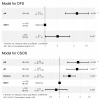Alpha-Enolase (ENO1) Correlates with Invasiveness of Cutaneous Melanoma-An In Vitro and a Clinical Study
- PMID: 35204345
- PMCID: PMC8871300
- DOI: 10.3390/diagnostics12020254
Alpha-Enolase (ENO1) Correlates with Invasiveness of Cutaneous Melanoma-An In Vitro and a Clinical Study
Abstract
Alpha-enolase (ENO1) is a glycolytic metalloenzyme, and its overexpression occurs in numerous cancers, contributing to cancer cell survival, proliferation, and maintenance of the Warburg effect. Patients with an overexpression of ENO1 have a poor prognosis. The aim of the present study was to investigate the prognostic significance of ENO1 in surgical resections from 112 melanoma patients and to assess its expression and enzymatic activity in normoxia and hypoxia in several melanoma cell lines. Overexpression of ENO1 in tumor cells from patients was correlated with unfavorable prognosticators such as Breslow thickness, Clark level, mitotic activity, and the presence of ulceration. The expression of ENO1 also positively correlated with a greater thickness of the neoplastic infiltrate and a worse long-term prognosis for patients with cutaneous melanoma. We report significantly higher expression of ENO1 in melanoma cell lines in comparison to normal melanocytes. To conclude, our in vitro and clinical models showed that overexpression of ENO1 promotes invasiveness of melanoma cells and correlates with aggressive clinical behavior. These observations open the way to further search of a potential prognostic and therapeutic target in cutaneous melanoma.
Keywords: ENO1; cutaneous melanoma; immunohistochemistry; melanoma cell lines.
Conflict of interest statement
The authors declare no conflict of interest.
Figures







References
-
- Rastrelli M., Tropea S., Rossi C.R., Alaibac M. Melanoma: Epidemiology, Risk Factors, Pathogenesis, Diagnosis and Classification. Vivo. 2014;28:1005–1011. - PubMed
-
- Conforti C., Zalaudek I. Epidemiology and Risk Factors of Melanoma: A Review. [(accessed on 12 March 2021)];Dermatol Pract. Concept. 2021 11((Suppl. 1)):e2021161S. doi: 10.5826/dpc.11S1a161S. Available online: https://dpcj.org/index.php/dpc/article/view/dermatol-pract-concept-artic.... - DOI - PMC - PubMed
Grants and funding
LinkOut - more resources
Full Text Sources
Miscellaneous

